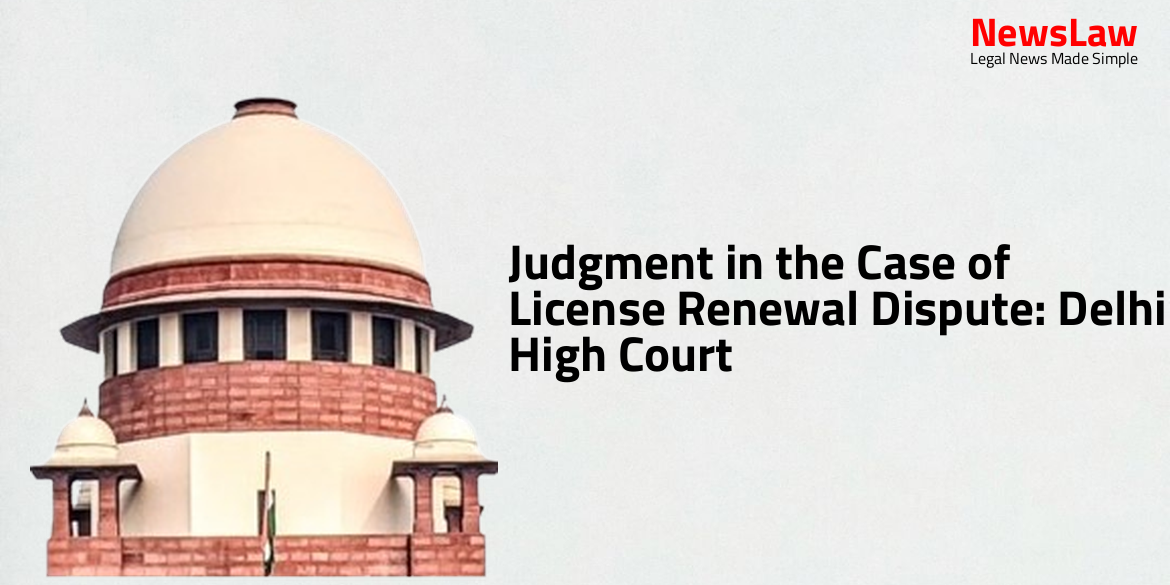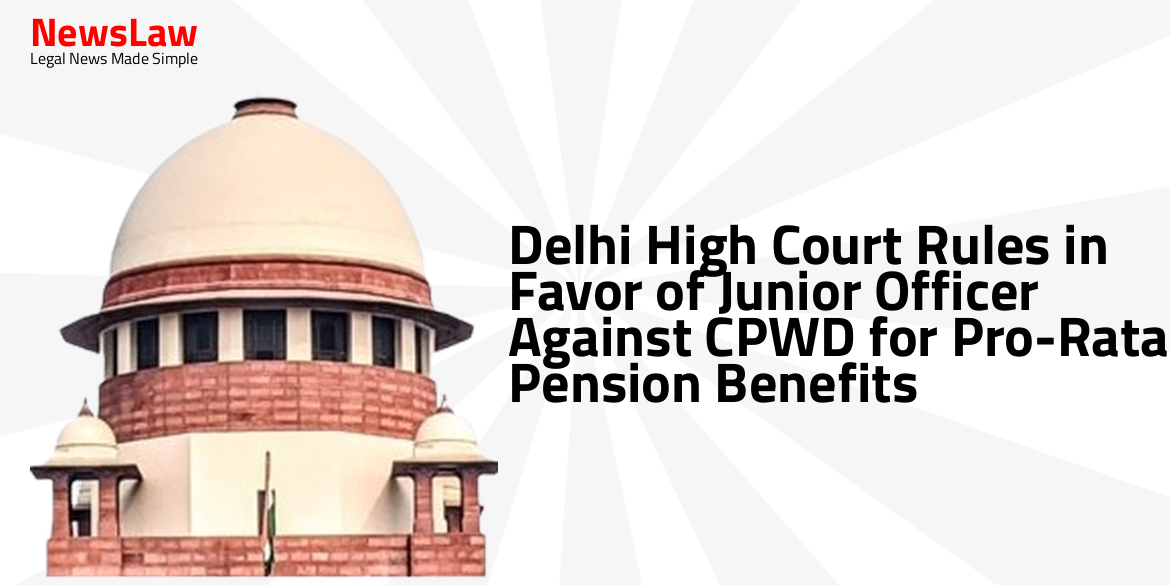Shortly put, the issue is: Is the Supreme Court the sole repository of power in terms of section 25 of the Code of Civil Procedure (for brevity ‘the CPC’) to direct transfer of a suit, appeal or other proceeding from a Civil Court in one State to a Civil Court in another State? Pleading why it is impossible for them to continue with prosecution of the suit at Dimapur, the appellants moved an application under section 24 of the CPC before the Gauhati High Court for an order to transfer the suit to the court of the District Judge at Guwahati, Assam. A learned Judge of the Gauhati High Court, which presently happens to be the common High Court for the States of Assam, Nagaland, Mizoram and Arunachal Pradesh, presiding over the Bench at the principal seat at Guwahati, rejected the application for transfer by a judgment and order dated 10 December, 2015. A bare perusal of such provision 24 would indicate that the High Court may, at any stage, direct transfer of proceedings pending before it to any court subordinate to it, or transfer proceedings pending in any court subordinate to it to itself or to any other court subordinate to it. On a harmonious construction of section 24 and section 25 of the CPC, it is clear that the latter will apply only to inter-State transfer of proceedings between two States where the two States in question have different High Courts, whereas, in a case involving inter-State transfer of proceedings within the territorial jurisdiction of a common High Court, the common High Court would have the power and jurisdiction to direct inter-State transfer of proceedings of the nature stated above, in exercise of its power under section 24 of the CPC. This observation was quoted with approval by the Supreme Court in paragraph 17 of its decision in D. Therefore, the aforementioned observation would also lend support to the submission of the appellants in as much as it would be more convenient for litigants within the territory of the common High Court to approach the Gauhati High Court for seeking transfer. Goswami urged us to set aside the order under challenge and to remit the matter to the Gauhati High Court for fresh consideration of the application of the appellants under section 24 of the CPC.
However, in order to appreciate whether the common High Court has the power to withdraw any suit, appeal or other proceeding pending before any Court subordinate to it from one State and to transfer the same to any Court subordinate to it, in another State, the provisions of both sections 24 and 25 of the Code will have to be examined as it involves an inter-State transfer and not an intra-State transfer simplicitor. Section 25 is the only provision in the CPC, which refers to transfer of a case from a Civil Court in one State to a Civil Court in another State. Power to effect inter-State transfer of any suit, appeal or other proceeding is not available to be exercised by a High Court in terms of section 24 of the CPC since such power is expressly and exclusively provided in section 25 thereof, to be exercised only by the Supreme Court.
Be that as it may, what has been held by this Court in paragraph 57 of Durgesh Sharma (supra) nullifies the point sought to be urged on the behalf of the appellants. Also, in relation to the exercise of power under section 24, the said power has been made available to even a District Court, which makes it amply clear that the power under section 24 is a continuation of sections 22 and 23 only. Further, the power of transfer of suits under section 22 can be exercised, “(W)here a suit may be instituted in any one of two or more courts and is instituted in one of such courts”. Sections 24 and 25 of the CPC being at the heart of the debate, the same need to read carefully. Power of State Government to transfer suits.—(1) Where any party to a suit, appeal or other proceeding pending in a High Court presided over by a Single Judge objects to its being heard by him and the Judge is satisfied that there are reasonable grounds for the objection, he shall make a report to the State Government, which may, by notification in the Official Gazette, transfer such suit, appeal or proceeding to any other High Court. Sharma would result in denuding a common High Court of the jurisdiction to even entertain an application under section 24 of the CPC for transfer of a suit from a Civil Court in one State to a Civil Court of another State, notwithstanding that exercise of jurisdiction by such High Court extends to both such States, it is absolutely necessary to consider Chapter V of the Constitution of India titled “(T)he High Courts in the States” and more particularly the terms of Articles 214, 231, 227, 235 and 228 which, to our mind, are of utmost relevance for deciding the legal issue. Article 228 empowers the High Court, subject to its satisfaction that a case pending in a court subordinate to it involves a substantial question of law as to the interpretation of the Constitution and the determination of which is necessary for the disposal of the case, to withdraw the case and (a) either dispose of the case itself, or (b) determine the said question of law and return the case to the court from which the case has been so withdrawn together with a copy of its judgment on such question, whereupon the said court shall proceed to dispose of the case in conformity with such judgment. The precursor of the Gauhati High Court was the High Court of Assam, which was established on 5 April, 1948 in terms of the Assam High Court Order, 1948 (for brevity ‘the 1948 Order’) made by the Governor General in exercise of power conferred by section 229 of the Government of India Act, 1935 and as adopted by the India Provincial Constitution (Amendment) Order, 1948.
In 1962, by an Act of Parliament titled the State of Nagaland Act, 1962 (for brevity ‘the 1962 Act’), the State of Nagaland was formed. Common High Court for Assam, Nagaland, Meghalaya, Manipur and Tripura.—(1) On and from the appointed day,— (a) the High Court of Assam and Nagaland shall cease to function and is hereby abolished; (b) there shall be a common High Court for the States of Assam, Nagaland, Meghalaya, Manipur and Tripura to be called the Gauhati High Court (the High Court of Assam, Nagaland, Meghalaya, Manipur and Tripura); (c) the Judges of the High Court of Assam and Nagaland holding office immediately before that day shall, unless they have elected otherwise, become on that day the Judges of the common High Court: (2) Nothing in clause (a) of sub-section (1) shall prejudice or affect the continued operation of any notice served, injunction issued, direction given or proceedings taken before the appointed day by the High Court of Assam and Nagaland under the powers then conferred upon that Court.” Section 18 of the former and section 15 of the latter legislation, more or less commonly worded, when read together would evince that a common High Court for the States of Assam, Nagaland, Meghalaya, Manipur, Tripura, Mizoram and Arunachal Pradesh to be called the Gauhati High Court (the High Court of Assam, Nagaland, Meghalaya, Manipur, Tripura, Mizoram and Arunachal Pradesh) came into existence.
The common thread that runs through the developments of 1962, 1971 and 1986, noted above, is that as and when the jurisdiction of the High Court of Assam and thereafter the Gauhati High Court came to be enlarged and extended to States other than Assam, all seven sister States in the North- Eastern part of the country agreed to bear the expenditure in respect of the salaries and allowances of the Judges of the common High Court as shall be allocated amongst the States in such proportion by an order of the President. Apart from insertion of sections 28A to 28K between sections 28 and 29, the Amendment Act, inter alia, also introduced a proviso in sub-section (1) of section 28, reading as follows: “Provided that on and from the commencement of the North-Eastern Areas (Reorganisation) and Other Related Laws (Amendment) Act, 2012, the common High Court shall be the High Court for the States of Assam, Arunachal Pradesh, Mizoram and Nagaland and shall cease to have its jurisdiction, powers and authority for the States of Meghalaya, Manipur and Tripura.” Hence, today, the Gauhati High Court is the common High Court exercising jurisdiction throughout Assam, Nagaland, Mizoram and Arunachal Pradesh; a fortiori, all Civil Courts in these four States are subordinate to the same High Court, i.e., the Gauhati High Court.
Therefore, so far as judicial administration is concerned, in terms of Article 231 of the Constitution, the Gauhati High Court is the High Court, inter alia, for the State of Assam as well as for the State of Nagaland. That apart, such transfer of a suit, appeal or other proceeding instead of being effected by a judicial act was left to an administrative act and, that too, only if the two State Governments were in agreement. Section 25 is, therefore, being substituted by a new section which provides for the transfer to the Supreme Court the existing power vested with the State Government and to confer on the Supreme Court such wide powers of transfer as it has in criminal cases under Section 406 of the Code of Criminal Procedure, 1973. Since under the pre-amended section 25, such a transfer could be made by the transferor State only if the transferee State were to consent to it, it was rightly observed in the SOR that it was not the function of the States to decide on such transfer. Having surveyed the provisions of the Constitution relating to the High Courts in general and how the Gauhati High Court has taken shape as the common High Court for, inter alia, the States of Assam and Nagaland, it is time to look into the decision in Durgesh Sharma (supra), cited by Mr. In our considered opinion, where several courts having jurisdiction are subordinate to one appellate court, an application for transfer may be made to such appellate court and the court may transfer a case from one court subordinate to it to another court subordinate to it.
Also Read: https://newslaw.in/supreme-court/appellant-convicted-for-culpable-homicide-not-amounting-to-murder/
In other words, if two courts are subordinate to different High Courts, one High Court has no power, jurisdiction or authority to transfer a case pending in any court subordinate to that High Court to a court subordinate to other High Court. On that analogy also, a High Court cannot pass an order transferring a case pending in a court subordinate to it to a court subordinate to another High Court.
It is no doubt true that even when Section 25 in the present form was substituted by the Amendment Act of 1976, sub-section (3) of Section 23 of the Code has neither been deleted nor amended. Durgesh Sharma (supra) is an authority having the effect of a binding precedent for deciding cases where the High Court for a State seeks to transfer a suit, appeal or proceeding from a court subordinate to it to a court subordinate to the High Court for another State. The constitution of the High Court with its Principal Seat and the Permanent Benches in the manner, as taken note supra, would indicate that all the courts in all the said four States are subordinate to the Gauhati High Court and since no separate High Courts are established in respect of Nagaland, Mizoram and Arunachal Pradesh, a provision under the Notification dated 22.6.1990 is made for the establishment of the Permanent Bench at Aizawl. If the said provision is kept in view and the above noted discussion relating to the establishment of the High Court and the Permanent Bench is taken note and in that circumstance, when the subordinate court in the State of Mizoram as also the subordinate court in the State of Assam is subordinate to the Gauhati High Court, a transfer petition filed under section 24 of the CPC before this court, namely, the Gauhati High Court, even for transfer of a case from the subordinate court in any of the four States, as indicated above, to the other State would be maintainable from the very provision as contained in section 24 itself.
Chalasani Deepthi (supra) arose out of an application filed by the petitioner-wife seeking withdrawal and transfer of a suit for restitution of conjugal rights, instituted by the respondent-husband in the Family Court, Ranga Reddy District, Telengana to the court of the Judge, Family Court, Vijaywada, Andhra Pradesh. The learned Judge spurned the objection of the respondent-husband that the transfer application ought to have been filed in the Bombay High Court at Goa and not at its principal seat in Mumbai, for the reasons recorded in the decision.
Insofar as inter-State transfer of any suit, appeal or other proceeding is concerned, a plain and literal reading of section 25 of the CPC does suggest that the power to so transfer lies with the Supreme Court only. Section 24 of the CPC is a general power of ‘transfer and withdrawal’ capable of being invoked by the High Courts at any stage either suo motu without notice or on the application of any of the parties after notice, whereas section 25 confers exclusive power on the Supreme Court, on the application of either of the parties and after notice, to transfer suits, etc. The text of the two sections, therefore, makes the position clear about the powers reserved for the High Courts and the Supreme Court to transfer suits, appeal or other proceedings. What, therefore, needs to be seen and appreciated is whether there is any conflict or inconsistency between the general law (section 24) and the special law (section 25) for the former to yield to the latter, and ascertain whether the High Court still has the jurisdiction under the general law to order an inter-State transfer notwithstanding (2004) 10 SCC 65 the special law vesting the Supreme Court with such power of transfer.
Also Read: https://newslaw.in/supreme-court/ownership-dispute-commissioners-order-and-revenue-documents/
From the factual matrix vis–vis the Constitutional and statutory provisions, there can be no cavil that the courts and tribunals in the States of Assam, Nagaland, Mizoram and Arunachal Pradesh are not only under the superintendence of the Gauhati High Court in terms of Article 227, all district courts and subordinate courts thereto in such States are subject to the control of the Gauhati High Court under Article 235 as well as subordinate to the same High Court in terms of section 3 of the CPC. This Court had the occasion to hold that if two courts are subordinate to different High Courts, one High Court has no power, jurisdiction or authority to transfer a case pending in any court subordinate to that High Court to a court subordinate to another High Court and it is only the Supreme Court which may order the transfer. The reason for such conclusion seems to be obvious that the High Court, to which an application for transfer is made, does neither enjoy any power of superintendence under Article 227 over the Civil Court to which the transfer is sought nor can such Civil Court be said to be a court over which the High Court exercises any control of the nature referred to in Article 235. However, there is no such fetter in section 24 that power under sub-clause (ii) of clause (b) of sub-section (1) thereof cannot be exercised if the transferee court, though subordinate to the High Court, is situate in a different State. The only caveat is that this power of transfer under section 24(1)(a) and 24(1)(b)(ii), however, cannot be exercised by the Gauhati High Court, say for transfer of a civil suit from a court in Assam or Nagaland to a Civil Court in Tripura or Manipur or Meghalaya because the said States, from 2012, are no longer part of the Gauhati High Court and are since having High Courts of their own.
Case Title: SHAH NEWAZ KHAN Vs. THE STATE OF NAGALAND (2023 INSC 176)
Case Number: C.A. No.-001497-001497 / 2023



